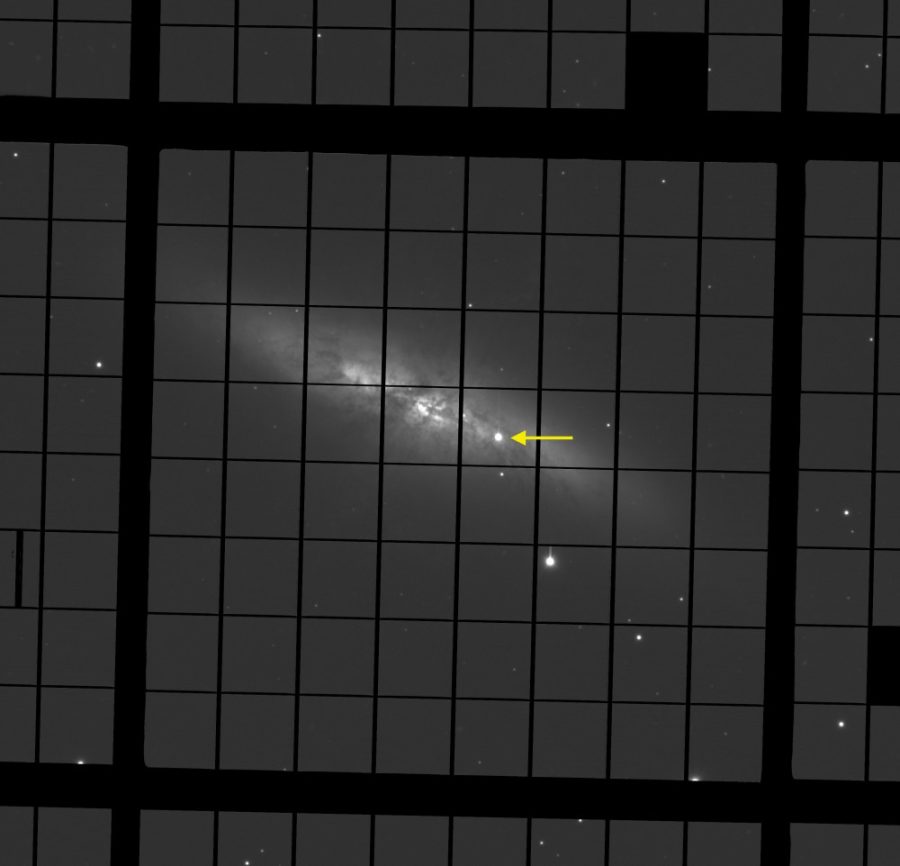An exploding dwarf star is lighting up the Tucson night sky.
The supernova, caused by the explosion of a small star known as a white dwarf, has appeared in a nearby galaxy. Named 2014 J, it is the closest observed supernova in 40 years, said Thomas Matheson, an associate astronomer at the National Optical Astronomy Observatory. Matheson specializes in supernovas and things that go “bump in the night.”
Because of how close the supernova is to Earth, researchers and the public alike have an opportunity to get a closer look at the dying star.
“This is a star that is destroying itself. It is dramatic and a lot of fun to look at,” Matheson said.
The star appeared in the Cigar Galaxy, otherwise known to astronomers as Messier 82, or M82 for short.
“The research aspect [of space] has helped us develop satellites and [has] given us cell phones,” said Ashley Stinnett, a researcher for the UA Bureau of Applied Research in Anthropology. “Between the bottom of the ocean and outer space, it’s all we have left to explore.”
A common misconception about space is that the night sky is fixed and unchanging, Matheson said. On the contrary, everything is always changing, and supernovas are no exception, he added.
There are two kinds of supernovas: the thermonuclear collapse of small stars, like 2014 J, and the collapse of massive stars.
“I think some people worry that science takes away from the wonder of it,” Matheson said. “I think that’s the wrong way to look at it, because as we peel away the layers, it becomes even more wondrous the more you learn.”
2014 J’s brightness remains consistent, much like the collapsed white dwarf stars that came before it. The brightness consistency allows researchers to measure how far away the star is from the earth.
“When a car is coming toward you, you can guess how far away the car is by how bright the lights are,” Matheson explained. “It’s the same game, except we measure exactly how much light there is.”
Although the supernova can be viewed using a relatively small telescope, the public can get a better view using a larger one, like the one at Kitt Peak National Observatory, said Jeronimo Cruz, a Kitt Peak Night Guide.
Humans have always been fascinated by the stars, Matheson said.
“Humans have gone out, sat in front of a campfire, looked up at the sky and wondered where they came from and what [it all means],” Matheson said. “We have an opportunity to answer those questions now.”









